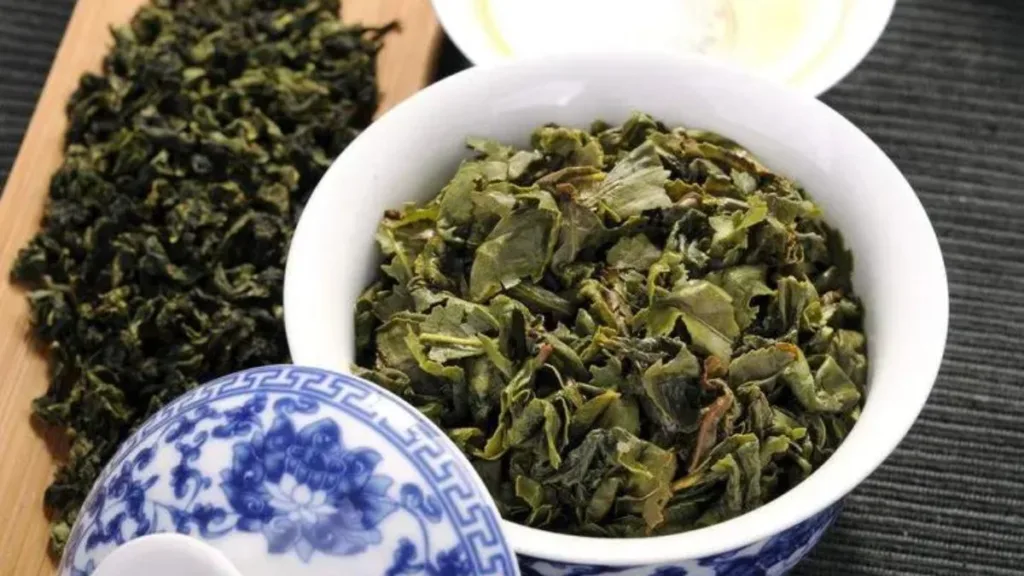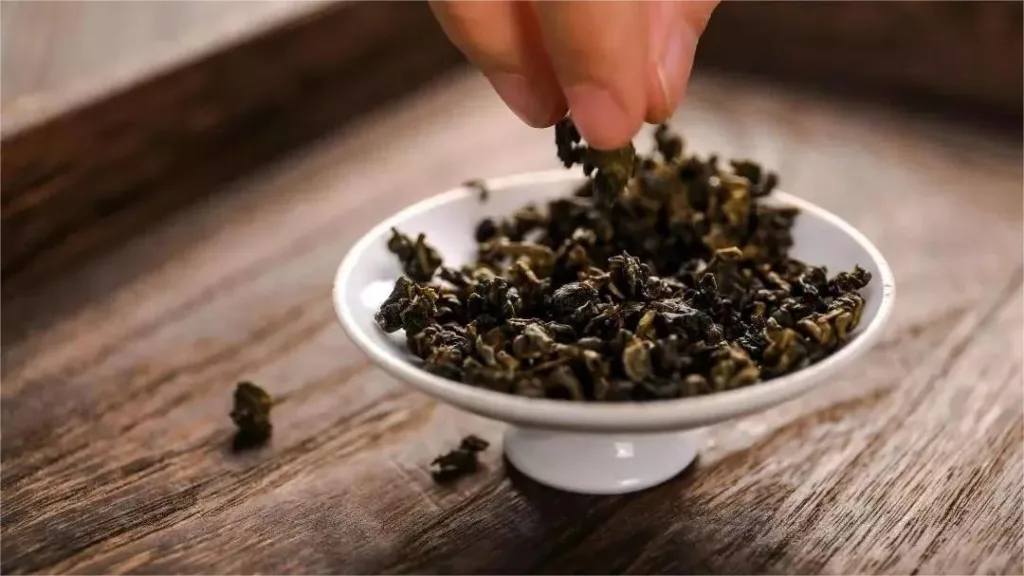Chinese Oolong tea is a diverse and captivating category, with each type offering a unique sensory experience shaped by its origin, processing techniques, and cultural significance. Let’s explore the nuances of eight notable Oolong teas, from the famed Da Hong Pao to the distinctive White Chicken Crest.
Da Hong Pao (大红袍) – Scarlet Robe: In the millennia-old tea culture of China, Wuyi Rock Tea holds unparalleled prestige, with Da Hong Pao standing out as a paragon among Wuyi Rock Teas. Often hailed as the “Emperor of Teas” or the “Tea King of Wuyi,” Da Hong Pao earns its name from the stunning red appearance of the tea bushes during early spring, resembling a robe of red. This tea, also known as the “Scarlet Robe,” is renowned for its bold flavor and is considered a pinnacle in the world of Wuyi Rock Tea.
Anxi Tie Guan Yin (安溪铁观音) – Iron Goddess of Mercy from Anxi: Originating from Anxi County in Fujian, Anxi Tie Guan Yin is among China’s top ten famous teas. Recognizable by its tightly rolled, plump, and evenly shaped leaves, it features a sand-green color. After brewing, the tea reveals a golden-hued liquor with a natural orchid fragrance, offering a taste that is rich, mellow, sweet, and enduring, often described as having “yun” or resonance.
Dong Ding Oolong (冻顶乌龙) – Frozen Summit Oolong: Primarily produced in the Lugu Township of Nantou County in Taiwan, Dong Ding Oolong thrives in the dense forests around Dong Ding Mountain. Harvested throughout the year, the tea leaves undergo a meticulous process, resulting in tightly rolled, semi-spherical dry leaves with a dark green color. The brewed tea exhibits a golden-yellow hue with hints of amber, accompanied by a robust fruity or floral aroma. The taste is characterized by a mellow, sweet, and lingering finish.
Feng Huang Shui Xian (凤凰水仙) – Phoenix Narcissus: Originating from Fenghuang Town in Chaozhou, Feng Huang Shui Xian is a strip-style Oolong tea available in three grades: Single Bush, Lang Cai (Wave Vegetable), and Shui Xian (Water Immortal). Known for its natural floral aroma, honeyed undertones, and a robust, sweet, and refreshing taste, this tea is resistant to oversteeping. It is popular in Guangdong, Hong Kong, Macau, and is exported to Japan, Southeast Asia, and the United States.
Tie Luo Han (铁罗汉) – Iron Arhat: Grown in the rocky terrain of Wuyi Mountain, Tie Luo Han acquires a unique flavor profile from its surroundings. The large leaves are plucked in early spring and undergo intricate processing, resulting in tightly twisted, dark green leaves. The brewed tea has a bright orange-yellow color, with initial notes of mild astringency evolving into a subtle bitterness that transforms into a clear sweetness. The aroma is rich and enduring, creating a captivating experience.
Wu Yi Shui Xian (武夷水仙) – Wuyi Water Narcissus: A historically renowned tea, Wu Yi Shui Xian traces its origins back to the Qing Dynasty. The leaves are plucked from the middle of the tea plant and undergo a series of processing steps, resulting in plump, green-brown leaves with a glossy appearance. When brewed, the tea exhibits a deep orange-yellow color with a rich floral aroma reminiscent of orchids. The taste is smooth, with a pronounced floral note and a lingering sweetness.
Feng Huang Dan Cong (凤凰单丛) – Phoenix Single Bush: Produced on the southeast slope of Fenghuang Mountain in Chaozhou City, Feng Huang Dan Cong benefits from abundant rainfall, significant temperature variations, and fertile soil. The tea leaves are plucked from individual bushes, contributing to its distinct flavor profile. This Oolong tea is celebrated for its elegant appearance, deep green-brown color, and a clear, amber-hued liquor. The taste is characterized by a smooth, refreshing quality with a lingering sweetness, and it is well-suited for multiple infusions.
Bai Ji Guan (白鸡冠) – White Chicken Crest: Bai Ji Guan is the only “Dao Cha” (Taoist Tea) from Wuyi Mountain, characterized by its unique appearance. The leaves are light green with white edges, and the tea buds have a crescent moon shape, resembling a chicken crest. Harvested in late May, the fresh leaves are processed to create a tea with dry leaves presenting a pale yellow hue with white, full-bodied leaves. When brewed, the tea has a bright orange-yellow color, leaving a fragrant and lasting aftertaste with a strong energy.
In conclusion, the world of Chinese Oolong tea is a fascinating journey through diverse flavors, aromas, and cultural stories. Each variety reflects the mastery of craftsmanship and the rich tapestry of China’s tea heritage, inviting tea enthusiasts to explore and savor the unique characteristics of each cup.



